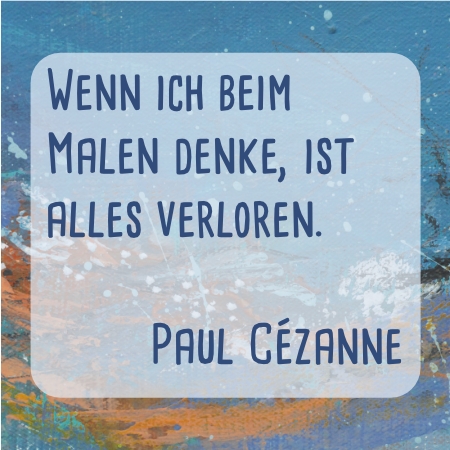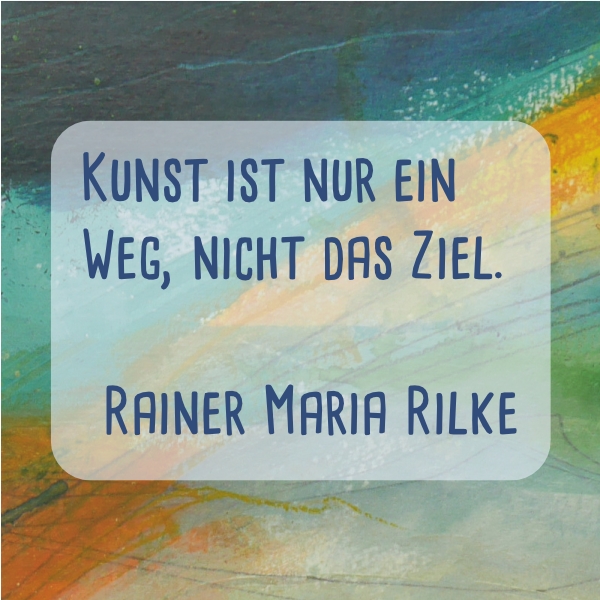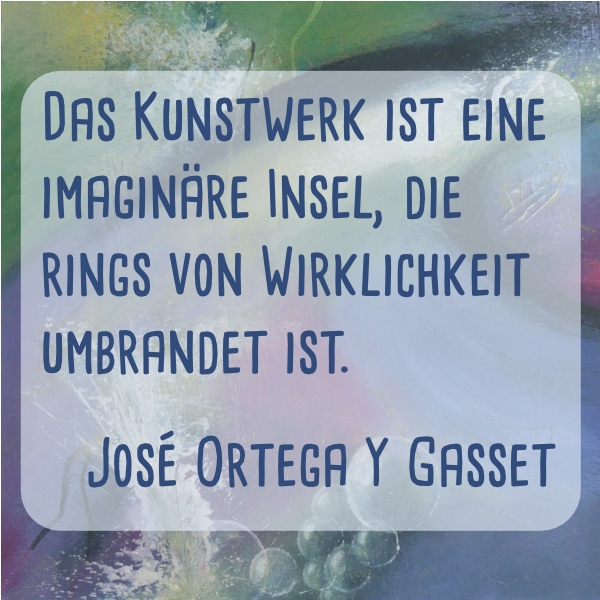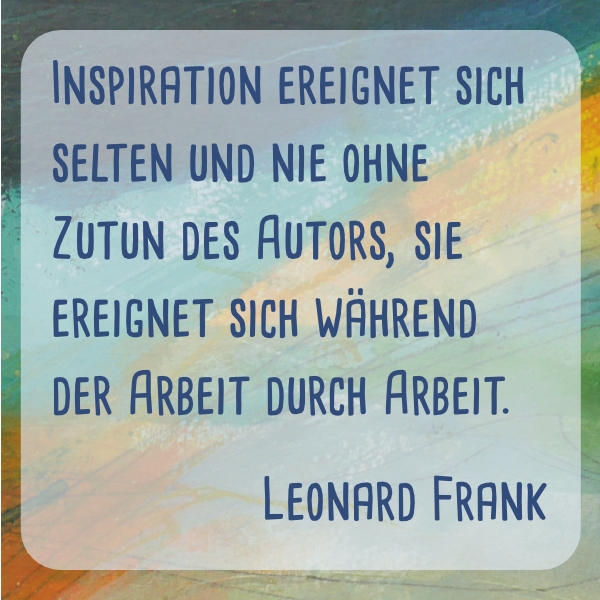Merci, Monsieur Cézanne! Vielen Dank für diese Worte.
Nicht denken, während man den Pinsel in der Hand hält und an der Staffelei steht. Es tut gut, dass das anscheinend auch für große Künstler und über Zeiten hinweg gültig ist.
Aber ist es so einfach? Nicht denken, einfach machen, und dann wird schon ein Meisterwerk daraus? Natürlich nicht.
Ich glaube kaum, dass Cézanne nicht überlegt hat, wenn er ein Bild erschaffen hat. Er hat sogar sehr viel überlegt. Er hat seine Motive lange und gründlich betrachtet und über sie nachgedacht. Er wollte malen, wie wir Menschen sehen, wie wir wahrnehmen. Und das hat ihn dazu geführt, weniger in korrekter Perspektive zu malen, stärkeren Fokus auf Formen und Farben zu legen und ein Bild durchzuplanen, um Harmonie zu erzeugen.
Das alles passiert allerdings nicht beim Malen sondern vor dem Malen, vermutlich auch zwischendurch.
Seit einiger Zeit übe ich mich in diesem Wechsel zwischen intuitivem Arbeiten an der Staffelei und dem Zurücktreten, Betrachten und Nachdenken über das, was ich da vor mir sehe. Diese Überlegungen zeigen mir den nächsten Schritt, den das Bild fordert. Ich gehe diesen nächsten Schritt und laufe intuitiv weiter, bis ich wiederum anhalte, schaue, nachdenke.
Theoretisch jedenfalls. In der Realität ist es auch hier nicht so einfach. Manchmal laufe ich zu weit, lande in einer Sackgasse, muss umkehren. Manchmal dauert es lange, bis ich weiß, wie es weitergehen kann mit einem Bild. Mit jedem Schritt lerne ich dazu, mit jedem Schritt tun sich neue Möglichkeiten auf. Eine Reise, die auf jeden Fall spannend bleibt.
Don’t think! – Quote from Paul Cézanne
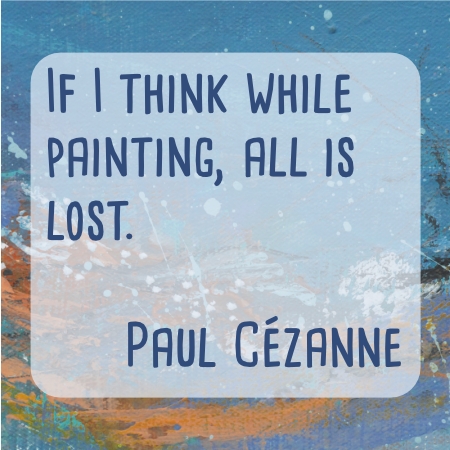
Merci, Monsieur Cézanne! Thank you for these words.
Don’t think while holding your brush in your hand and standing on the easel. It is good that this is apparently also valid for great artists and over times.
But is it so easy? Don’t think, just make it, and then a masterpiece becomes of it? Of course not.
I hardly think that Cézanne did not consider when he created a painting. He even considered a lot. He looked at his motifs for a long time and thoroughly thought about them. He wanted to paint how we humans see, how we perceive. And that led him to paint less from a correct perspective, to focus on shapes and colors and to plan an image to create harmony.
All of this does not happen while painting but before painting, probably also in between.
For some time now I have been practicing switching between working intuitively at my easel and stepping back, looking and thinking about what I see in front of me. These considerations show me the next step that the painting calls for. I take this next step and continue to run intuitively until I stop, look, think.
In any case, that‘s theory. In reality it is not that easy. Sometimes I run too far, land in a dead end, have to reverse. Sometimes it takes a long time before I know how things can go on with a painting. With every step I learn more, with every step new possibilities open up. A journey that definitely remains exciting.
